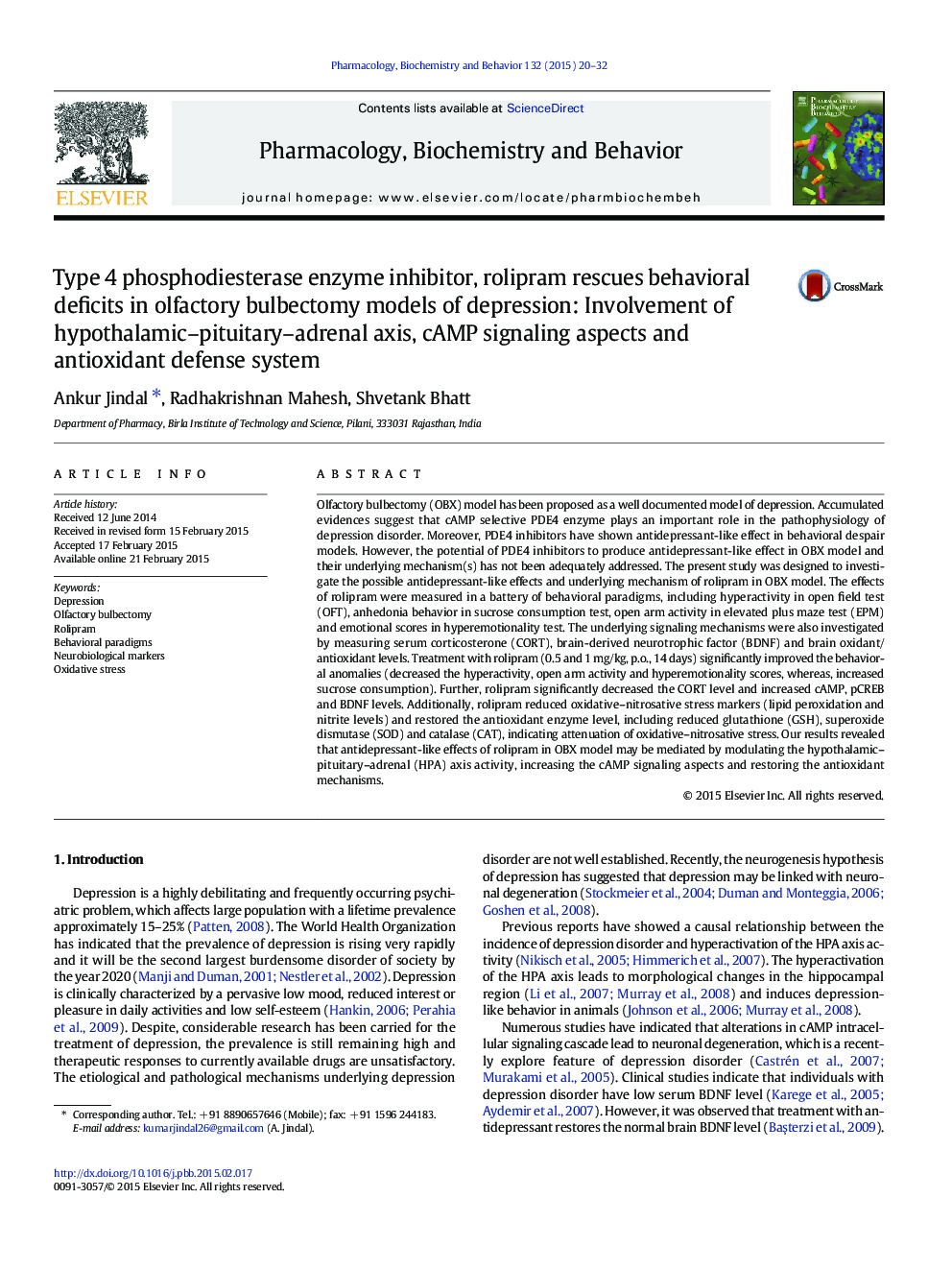| Article ID | Journal | Published Year | Pages | File Type |
|---|---|---|---|---|
| 2012799 | Pharmacology Biochemistry and Behavior | 2015 | 13 Pages |
•OBX rats showed depression-like behavior.•OBX rats showed alter HPA axis, oxidant/antioxidant system and cAMP signaling.•Rolipram reversed the depression-like behavior in OBX rats.•Rolipram normalized alter HPA axis, oxidant/antioxidant system and cAMP signaling.•Rolipram effect may relate to HPA axis, cAMP/CREB/BDNF and antioxidant mechanism.
Olfactory bulbectomy (OBX) model has been proposed as a well documented model of depression. Accumulated evidences suggest that cAMP selective PDE4 enzyme plays an important role in the pathophysiology of depression disorder. Moreover, PDE4 inhibitors have shown antidepressant-like effect in behavioral despair models. However, the potential of PDE4 inhibitors to produce antidepressant-like effect in OBX model and their underlying mechanism(s) has not been adequately addressed. The present study was designed to investigate the possible antidepressant-like effects and underlying mechanism of rolipram in OBX model. The effects of rolipram were measured in a battery of behavioral paradigms, including hyperactivity in open field test (OFT), anhedonia behavior in sucrose consumption test, open arm activity in elevated plus maze test (EPM) and emotional scores in hyperemotionality test. The underlying signaling mechanisms were also investigated by measuring serum corticosterone (CORT), brain-derived neurotrophic factor (BDNF) and brain oxidant/antioxidant levels. Treatment with rolipram (0.5 and 1 mg/kg, p.o., 14 days) significantly improved the behavioral anomalies (decreased the hyperactivity, open arm activity and hyperemotionality scores, whereas, increased sucrose consumption). Further, rolipram significantly decreased the CORT level and increased cAMP, pCREB and BDNF levels. Additionally, rolipram reduced oxidative–nitrosative stress markers (lipid peroxidation and nitrite levels) and restored the antioxidant enzyme level, including reduced glutathione (GSH), superoxide dismutase (SOD) and catalase (CAT), indicating attenuation of oxidative–nitrosative stress. Our results revealed that antidepressant-like effects of rolipram in OBX model may be mediated by modulating the hypothalamic–pituitary–adrenal (HPA) axis activity, increasing the cAMP signaling aspects and restoring the antioxidant mechanisms.
